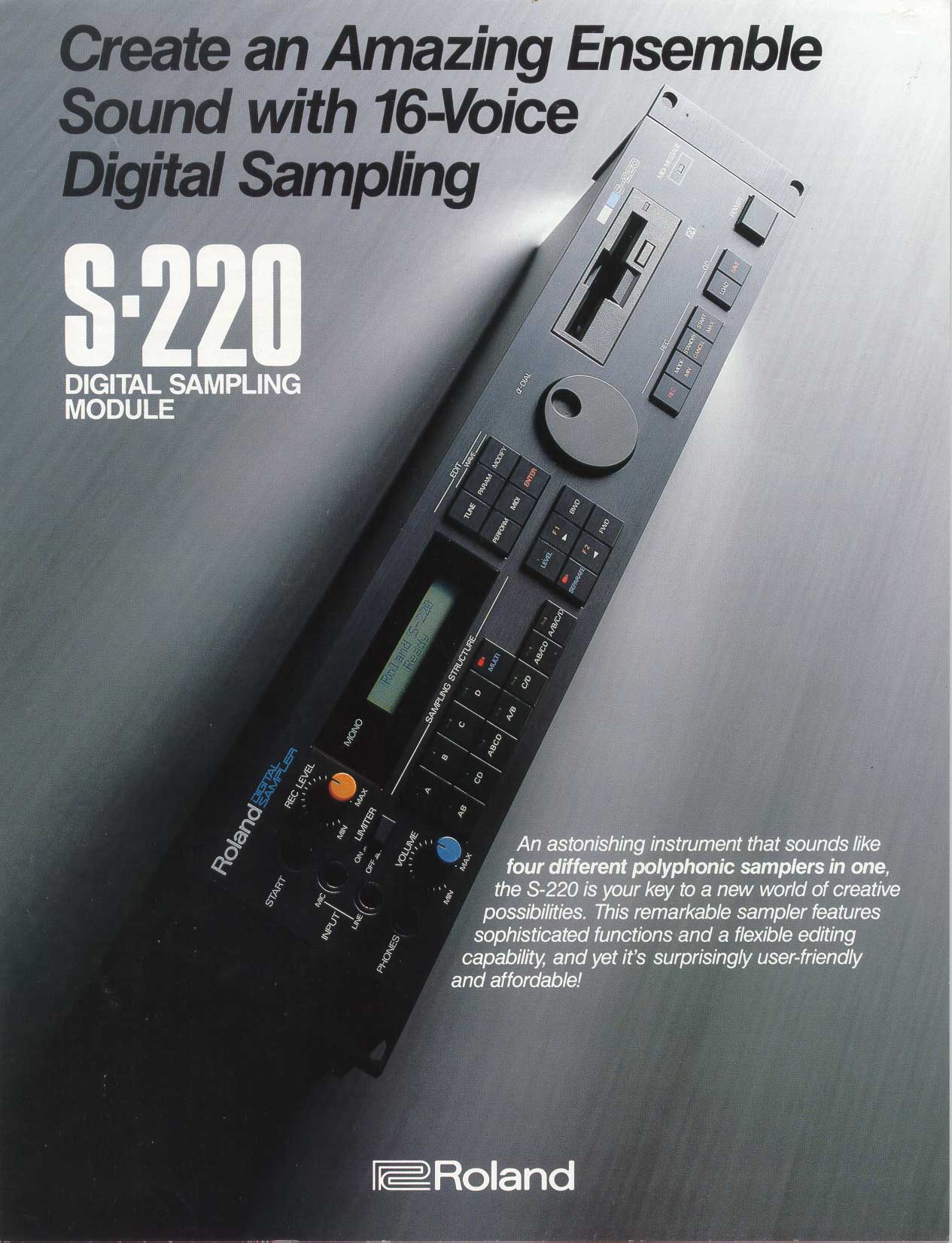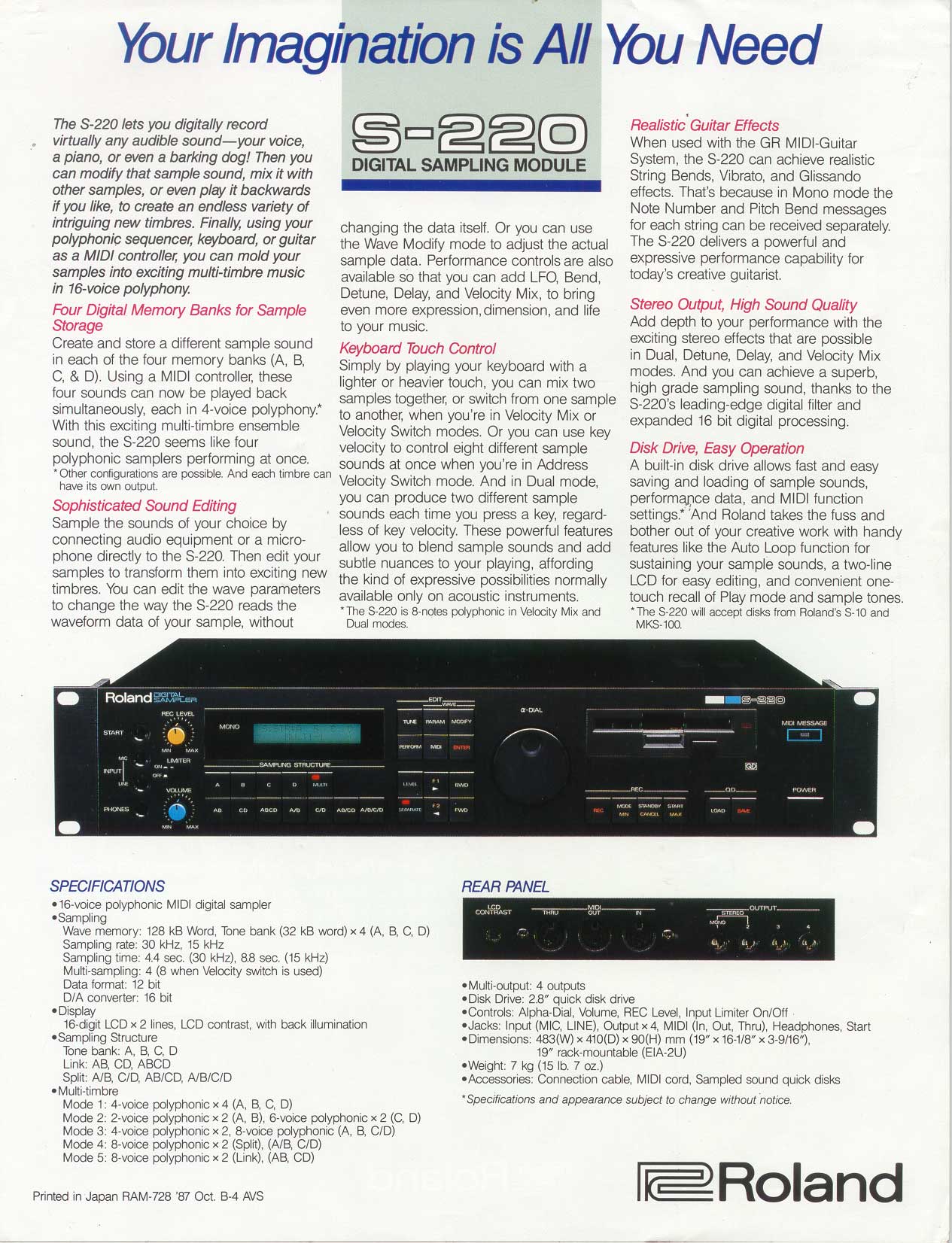Recent | Online | Vintage | Modern | Win | Mac OS9 | DOS | Amiga | Atari ST | Graphics | Midi io | Sequencers | Roland "MC" | E-mu | Ensoniq | Akai MPCs | Samplers | Akai "S" | Roland "S" | Synths | VST Samplers | VST Synths | Roland "JV" | Modules | Drums | Mixers | Timeline | Hackintosh | Artists | Graphics
Welcome to Oldschooldaw.com! (Online since 2014) proudly SSL-FREE! and serving vintage computers worldwide! if you are human, Register & Login to gain more access to all boards here; Some guest permissions have been limited to reduce traffic from bots and encourage registration.
Welcome to Oldschooldaw.com! (Online since 2014) proudly SSL-FREE! and serving vintage computers worldwide! if you are human, Register & Login to gain more access to all boards here; Some guest permissions have been limited to reduce traffic from bots and encourage registration.
Posted by: chrisNova777
« on: July 31, 2016, 03:08:44 PM »
http://www.vintagesynth.com/roland/s220.php
1987
takes quickdisks not floppies
Quote
The S-220 is an upgraded rackmount version of the original S-10 sampling keyboard with polyphony that has been doubled to 16 voices. Like the S-10, it is still a very limited consumer-grade sampler. Its sampling specs are limited to a 12-bit, 30kHz sample-rate. With only 256k of internal memory spread over 4 banks (64k per bank) you get a maximum sample time of 4.4 seconds (1.1 seconds per bank). That's hardly enough for any serious music production. Samples can be stored and loaded on a built-in 2.8" floppy disk system called the Quick Disk drive (which isn't very quick by today's standards). The S-220 also features 4 part multitimbrality and up to 5 audio outputs.
Roland has created some nice libraries for the S-10 on disk which are compatible with the S-220. Creating your own samples is pretty easy and was designed for any novice to intermediate player. 30kHz or 15kHz sampling is available, and the S-220 has a pretty good auto-loop feature. The 12-bit resolution and 30-15kHz sample-rates mean lo-fi quality (which you might find desirable). Further edit parameters include sample trimming, looping, reverse, tuning, envelope editing, filtering, velocity effects and hi-pass or low-pass filtering. All this editing is achieved by assigning the parameters to a dial or wheel just like the Alpha Juno series. Though the S-220 is an entry-level sampler, S-330 is a more advanced system with professional appeal.
